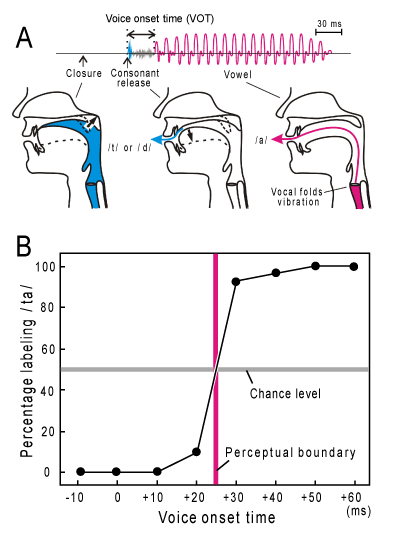
 |
| Figure 3: A: Schematized waveform of plosive consonant-vowel (CV) syllables, /da/ or /ta/, and midsaggital configuration of the vocal tract during articulation. The signal comprises several physical hallmarks reflecting distinct articulation processes: Closure, Consonant release, Voicing and Voice onset time (VOT). Closure: the airway is closed by a set of articulators (alveolar ridge and tongue tip, in this case) so that no air can escape, thereby raising air pressure behind the articulators. Consonant release: downward movement of the tongue tip creates a narrow crevice, through which air explosively passes with generating brief turbulence noise (blue arrow). Voicing: the configuration of the glottis and the stiffness of the vocal folds are adjusted to permit continued vocal-folds vibration, which creates a vowel (red arrow). “Voice onset time (VOT)” is referred to as the interval between the onset of Consonant release and that of Voicing (Based on Stevens [20]). B: The mean performance of native English speakers in psychoacoustic experiments using /da/-/ta/ syllables with variable VOT. The ordinate gives the mean percentage of identifying /ta/. The abscissa gives VOT. The red line represents the “VOT boundary” where this psychometric function curve crosses the chance level (= 50%) (Modified from Lisker and Abramson [47]). |